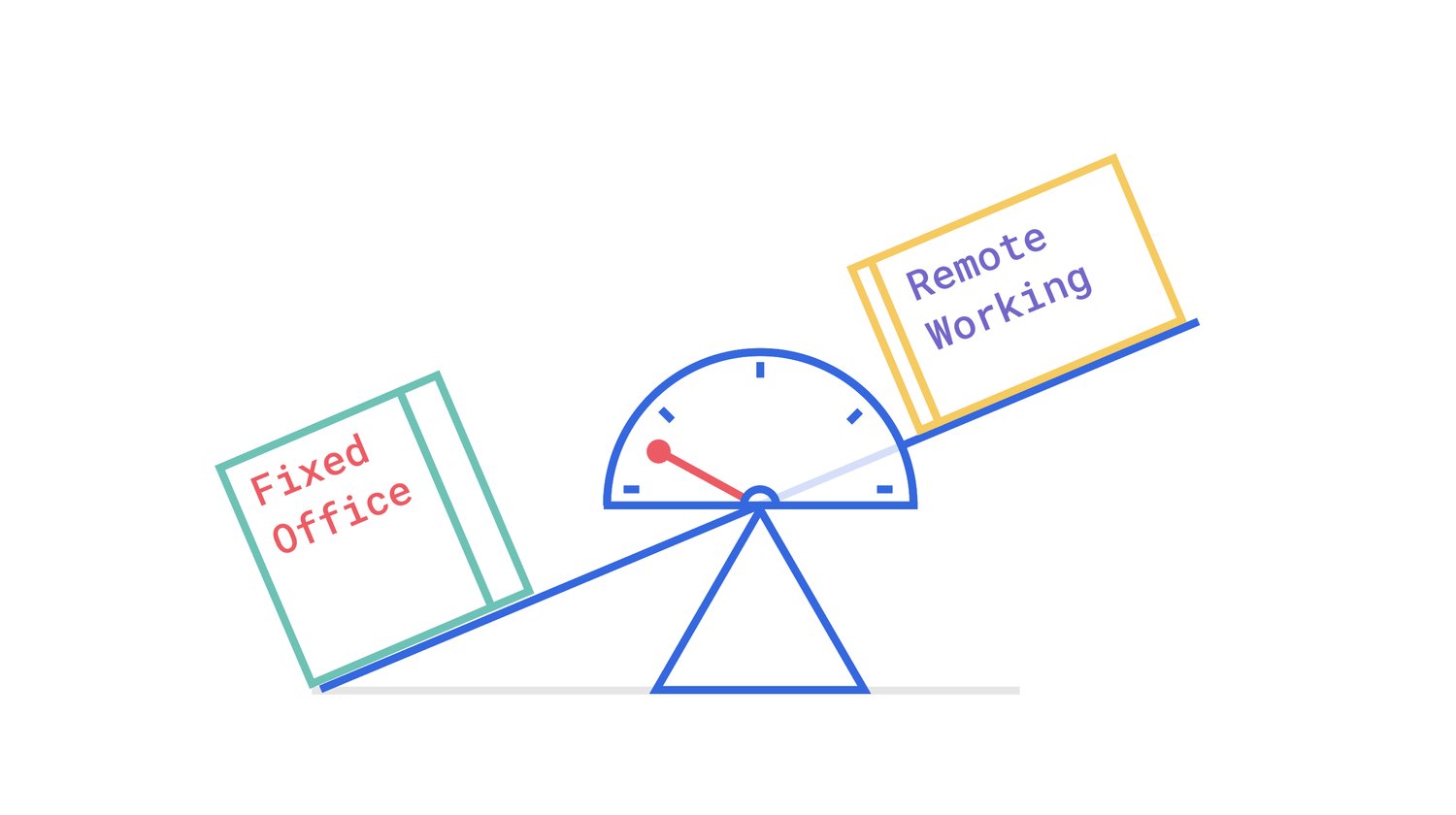Remote and distributed work is on the rise as more full-time employees demand workplace flexibility and organizations realize and embrace the benefits. A 2018 State of Remote Work survey by Buffer showed that 39% of remote organizations have fewer than 25 employees, which could indicate that it’s becoming more common for small businesses to start out with remote work in their work culture. This makes sense — companies with distributed work programs can save on workspace costs by 33%, and are able to access and hire from a much wider pool of talent.
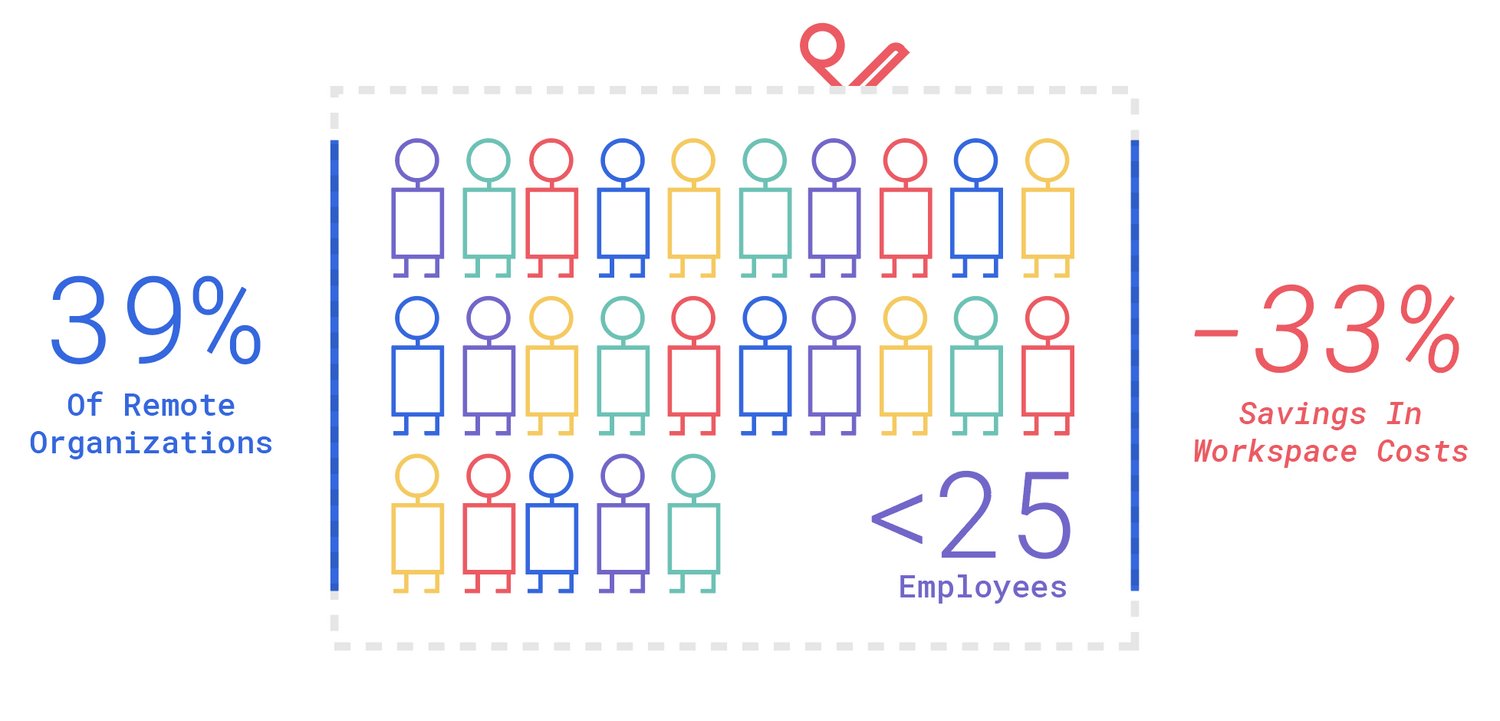
Yet as remote and flexible work becomes increasingly common, organizations must seriously rethink the policies and infrastructure needed to support their individual employees and distributed teams. We believe this means everything from establishing well-defined remote & distributed work protocols (including robust measures to promote a healthy work-life balance), to ensuring access to low-latency internet in a distraction-free space, and even creating more opportunities for informal interactions between team members and across geographic and organizational boundaries.
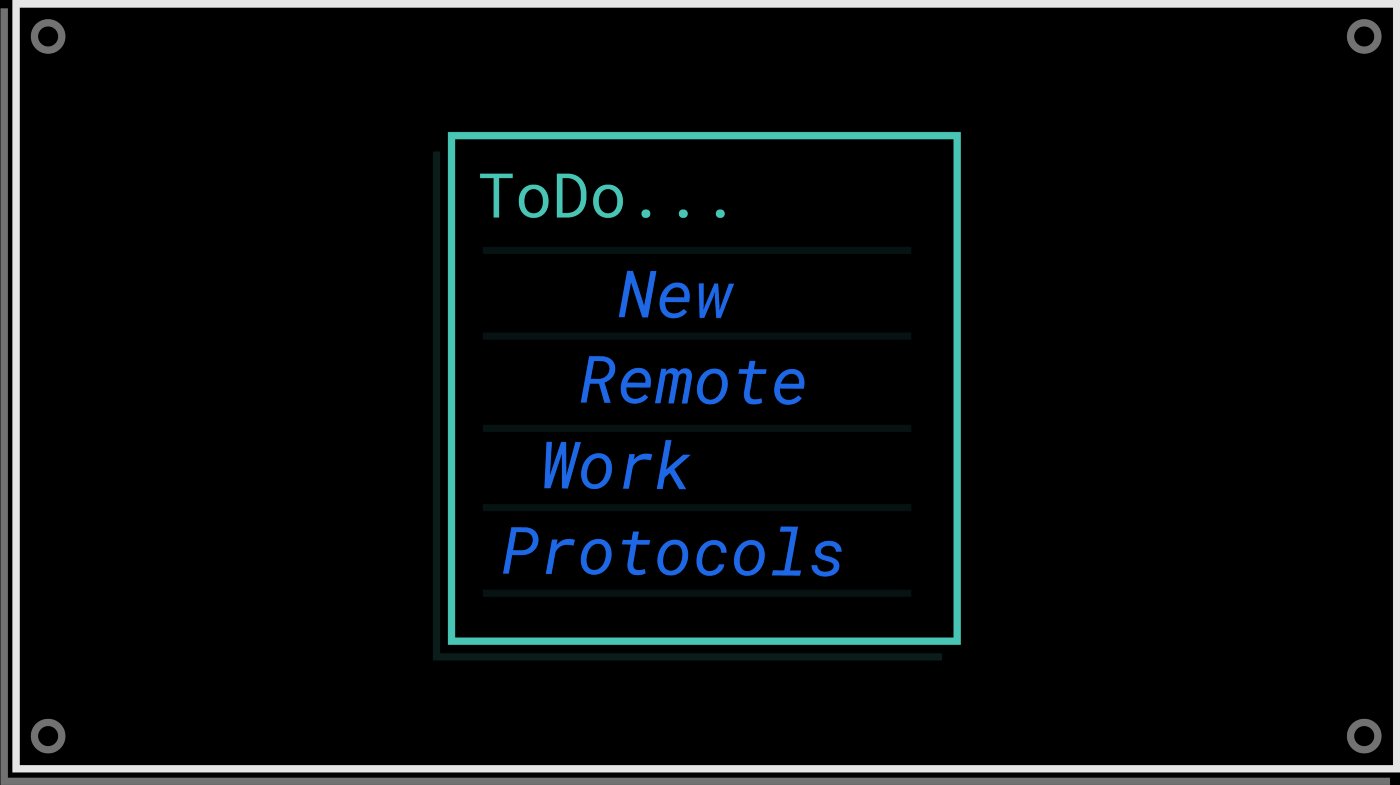
Remote and distributed work protocols
While organizations are happy to embrace freelancers, temporary, and agency workers, as it turns out, the majority (57%) lack remote work policies. Remote work policies are the guidelines that make remote work actually work, defining and aligning expectations around important issues like internal communication (e.g. which tools to use, response times, frequency of meetings) and the definition of when a task or project is “done.” Just as traditional work policies stipulate core hours, dress code, and employee evaluations, distributed and remote teams need a similar set of rules and guidelines to be able to perform and deliver as a team.
Additionally, remote and distributed workers should consider incorporating a section on time off and holidays. While some may argue that increased flexibility means employees need less time away from work, think again:
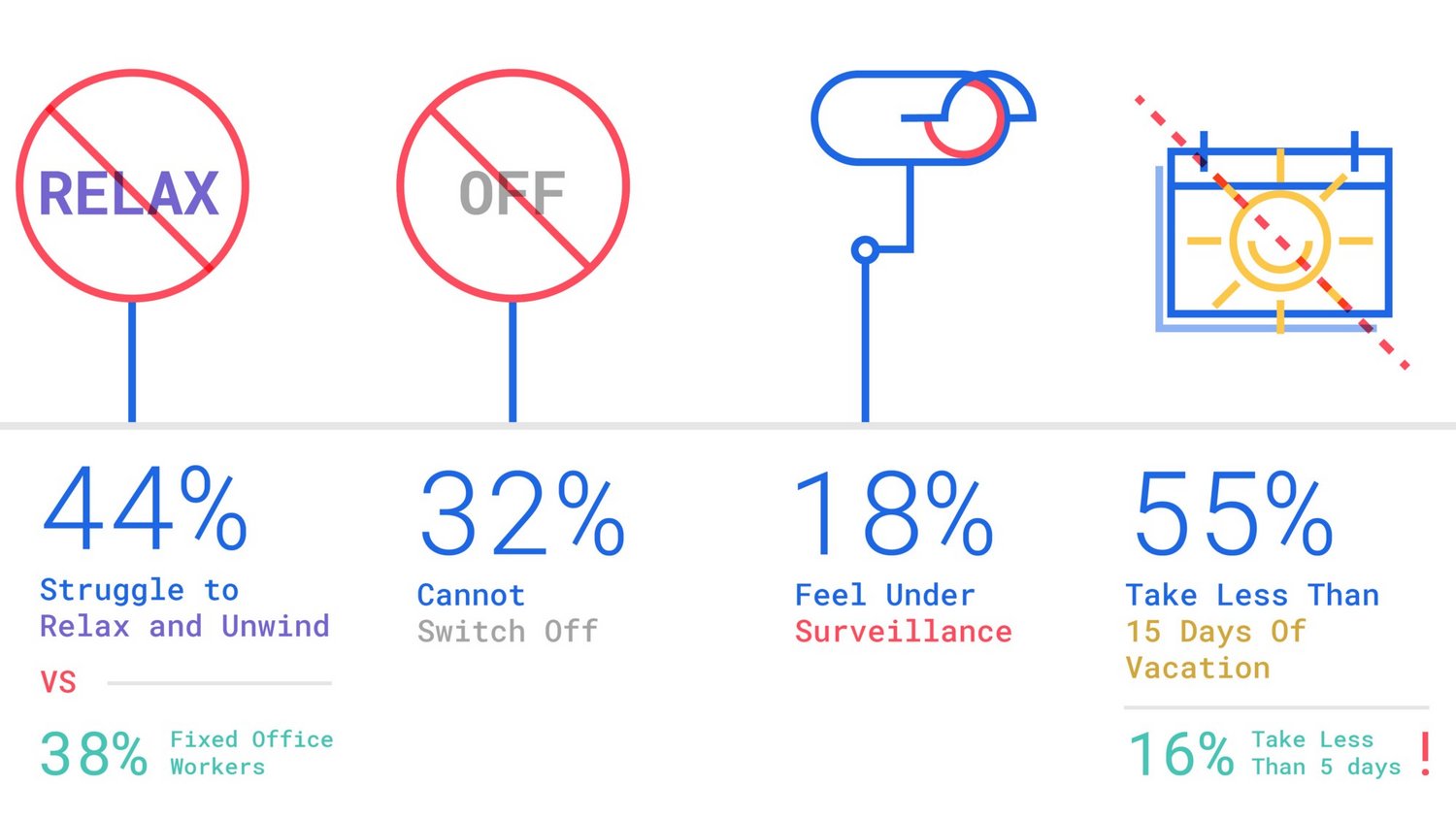
- A 2017 Cardiff University study found that 44% of remote workers struggle to relax and unwind after work, compared with 38% of staff who work in fixed locations; (Source: People Management)
- An April 2018 study by the CIPD found that a third (32%) of staff felt that working remotely meant they could not switch off in their personal time; (Source: CIPD)
- Nearly a fifth (18%) likened the constant connection to the office to being under surveillance (Source: CIFR)
- Additionally, a staggering 55% of remote workers take fewer than 15 days of vacation per year. The smallest range of vacation days in the survey — 0 to 5 days — is the norm for 16% of remote workers (Source: Buffer)

According to Professor Alan Felstead, the lead researcher in the Cardiff University study,
“Remote workers are over-compensating to prove to their colleagues that they are not in their pyjamas at home. They want to prove to their employers that they are a safe pair of hands willing to go the extra mile in return for the discretion an employer gives them to work at home or in a remote location.”
(Source: People Management UK)
This inability to “unplug” could ultimately lead to rising dissatisfaction and lower retention rates; thus, employers with remote and distributed teams must actively promote the right degree of work-life balance in order to prevent burnout among its employees.
Connectivity, work spaces, and devices
Access to low-latency internet, a regular space to work, and necessary devices is imperative for the modern office worker. While these functions have traditionally been covered by physical offices, for teams that choose not to co-locate, the burden of sourcing and paying for such basic facilities falls primarily on the employees themselves.
According to Buffer, 78% of respondents said their company didn’t pay for their Internet (the average monthly cost for internet in the U.S. is $60) and 76% said that their company doesn’t pay for a coworking space (the average monthly cost of a coworking space in the U.S. is $195). Consider also that bring your own device (BYOD) is becoming increasingly popular, with employee productivity and cost savings cited as the key reasons to adopt.
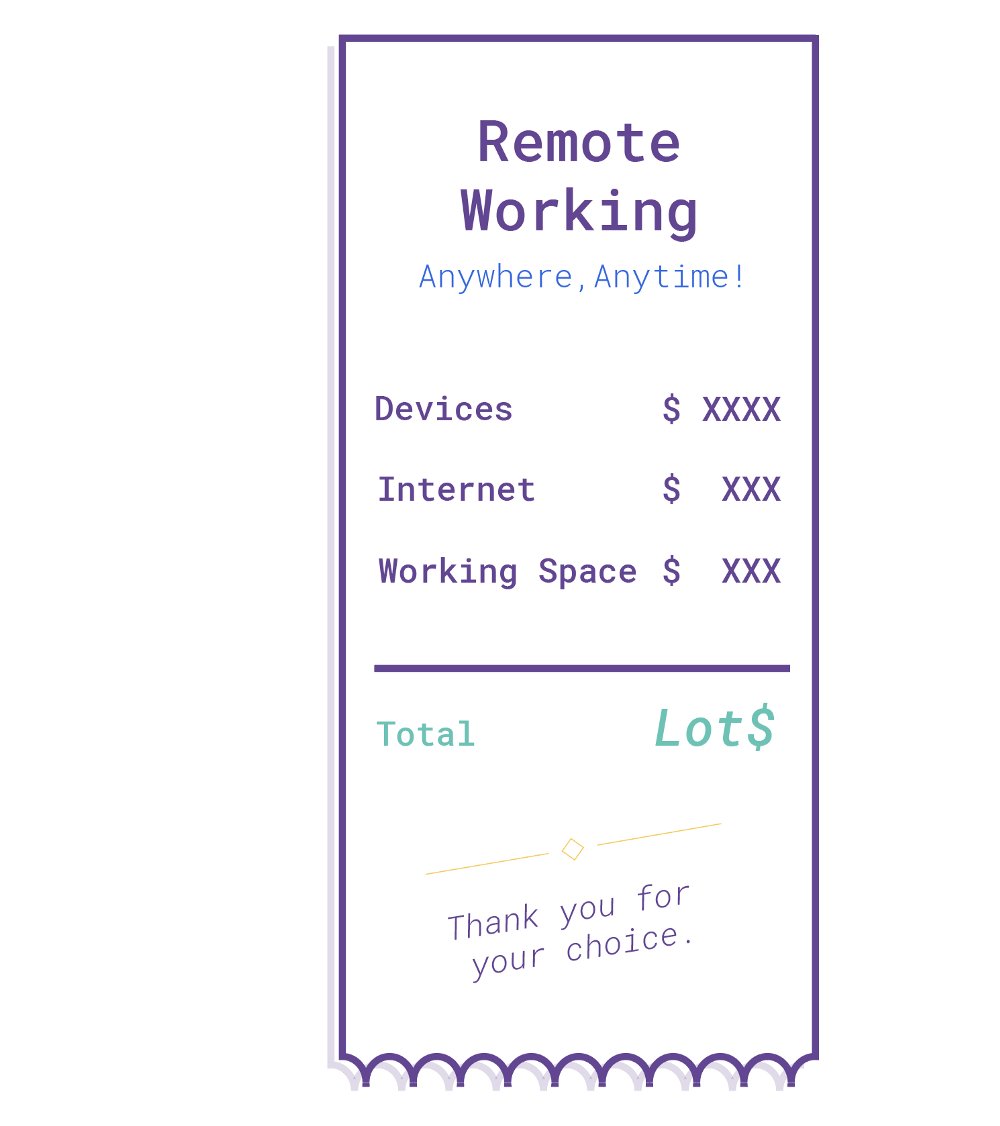
It is prescient to ask how much of these cost savings are actually becoming a burden on workers and employees — some organizations may be taking advantage of flexible and remote work to push labor costs onto the laborers themselves. If organizations are paying for the space, internet/phone connectivity, and equipment of some of their staff, it only makes sense to subsidize, source, and bundle the same basic infrastructure for distributed teams and remote workers as well, particularly as their numbers and influence rise.
Loneliness and informal communication
Physical offices provide the space to gather, mingle, collaborate, and enjoy chance encounters. When Steve Jobs famously designed the Pixar office in an old canning factory, he put everything — mailboxes, cafe, gift shop, even the bathrooms — in the atrium, which all employees needed to traverse across constantly.

“We wanted to find a way to force people to come together,” Jobs said in 2001, “to create a lot of arbitrary collisions of people.” “The bathrooms in the centre initially drove us crazy,” Brad Bird, the director of Ratatouille and others, told McKinsey Quarterly later. “But [Steve] realized that when people run into each other, when they make eye contact, things happen.”
(Source: The Independent)
Jobs was onto something. According to Ben Waber, Ph.D, and CEO of people analytics software firm Humanyze, “As an organizational tool, the physical space is much more important than anything else. The companies who don’t realize this are going to get crushed.”
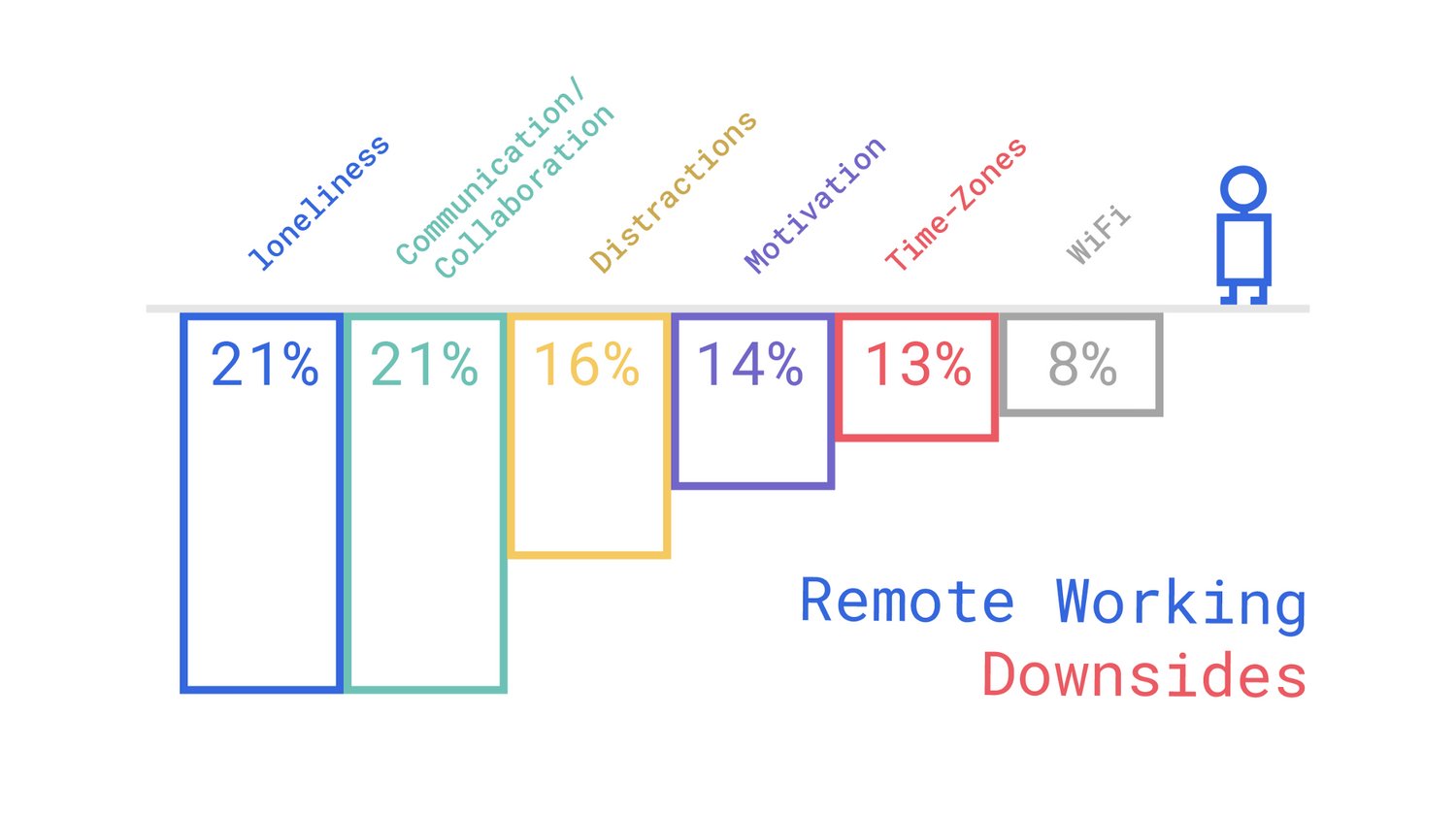
Remote workers echo this sentiment. The biggest downsides of remote work they raised were loneliness (21%) and problems with communication / collaboration (21%), followed by distractions at home (16%), staying motivated (14%), timezone challenges (13%), and finding reliable WiFi (8%). (Source: Buffer)
Is it possible for distributed teams and remote workers to not feel lonely, and enjoy the serendipitous encounters that one can only gain by being co-located? Besides providing the virtual equivalent of water cooler moments for distributed team members, the next generation of remote work products and technologies will need to do more to fill the gaps around informal communication, spontaneous collaboration, and relationship-building.

Conclusion
Teams and individual employees may decide that the flexibility and autonomy gained now is worth bearing the load of additional costs. But as the number of employers offering such benefits rise, and the ability to work flexibly or in distributed teams becomes the norm, the organizations that proactively invest into the necessary infrastructure will ultimately be the best places to work. Organizations should rethink their current policies and infrastructure to support and strengthen remote and distributed teams in order to reap the future benefits.
At Tonari, we are dedicated to solving the challenges around informal communication through state of the art technology and design. We are building remotely connected spaces that facilitate trust-building and expressive collaboration — areas that today’s tools are too restrictive and low-fi to address — and are committed to making our solutions available to everyone, unlocking opportunities for people to live and work from anywhere.

If you enjoyed this and want to learn more about tonari, please visit our website and follow our progress via our monthly newsletter. And if you have questions, ideas, or words of encouragement, please don't hesitate to reach out at hey@tonari.no. 👋
Find us 💙
Facebook: @heytonari Instagram: @heytonari X: @heytonari
